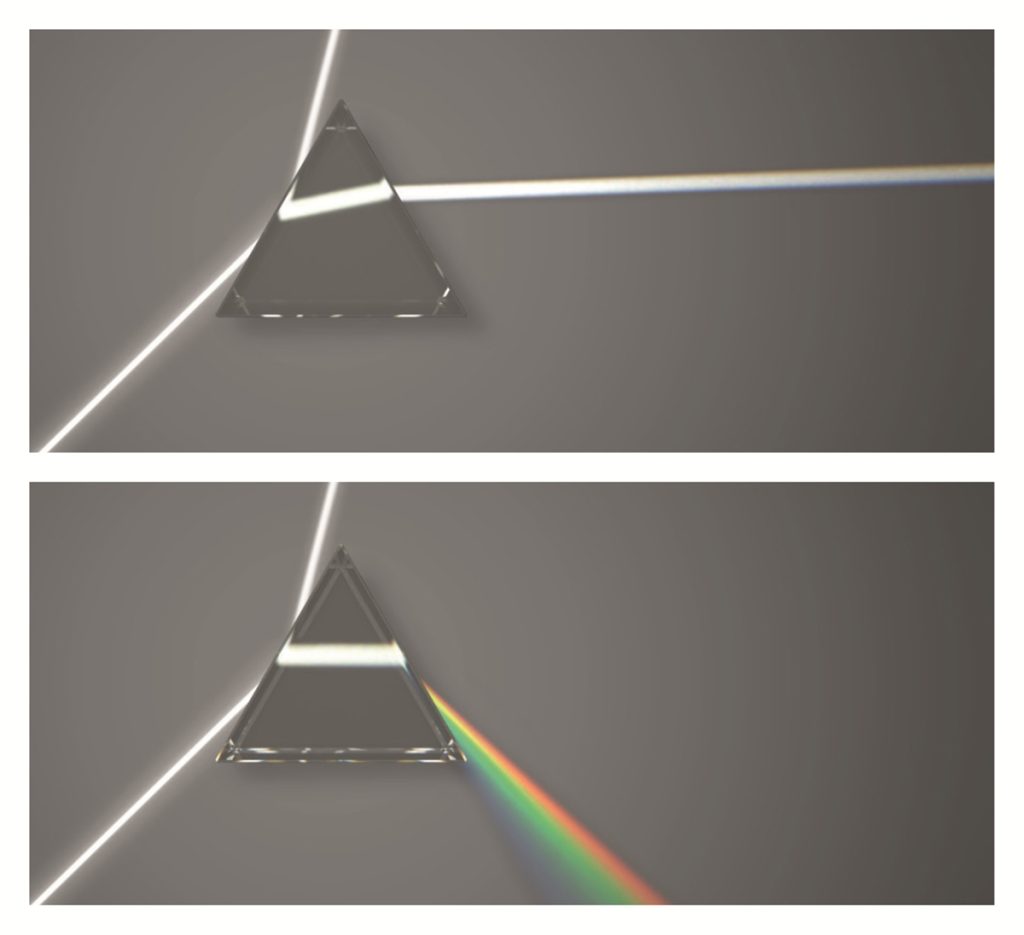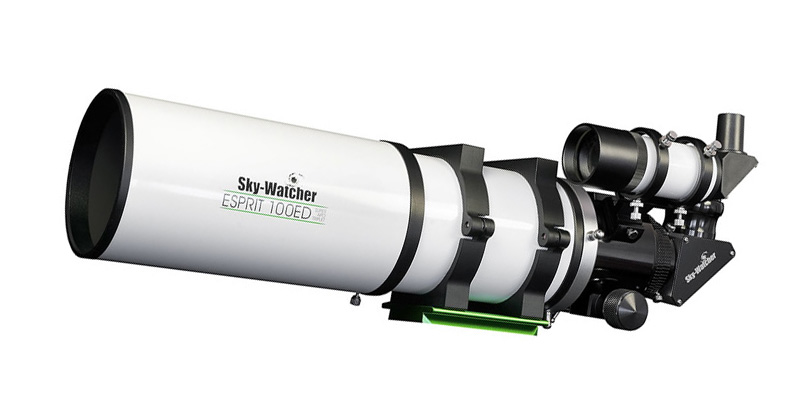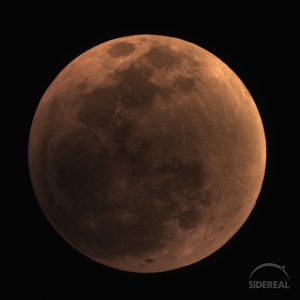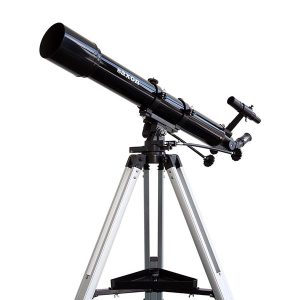Following a minor wholesaler rearrangement, Sidereal Trading is now able to supply Sky-Watcher Esprit refractors. Nice.
You probably already know that I’m a refractor guy. I’ve said that on many occasions. You probably also know that the Esprit range is made up of triplet refractors, one element of the cell being FPL-53 glass.
What does all this mean?
Well, the chronic problem of refractors is chromatic aberration, where white light gets split into its component colours when passing through a lens. This is called dispersion, but all you need to remember is the album cover for Pink Floyd’s Dark Side of the Moon.
Chromatic aberration in a refractor means that blue light is bent more than other frequencies when passing through the lens. Red light is bent least, and green is somewhere in the middle. The effect of this is that blue light focuses short of the camera sensor (or your eyepiece), and red light still hasn’t reached focus.
The effect of this is a blurry image, with odd colours around places where dark and light meet. If you’re looking at stars, they end up with weird colours around them, normally blue or red, and the effect gets worse towards the edges of the field of view.
There are a couple of ways of managing this, and the Esprit uses both.
First, it uses extra-low dispersion glass, including one element of FPL-53 glass made by Ohara in Japan. This glass doesn’t split white light into as much of a rainbow, so the problem, while still being there, is a lot less severe.
Have a look at the image of two prisms. The one at the top is extra-low dispersion, and you can see that not only does the light bend a lot less than the one beneath, it hardly splits into a rainbow at all. The prism at the bottom definitely has me thinking that the paper holds their folded faces to the floor. (Or am I being too obscure?)

The second way the Esprit fights chromatic aberration is by having three lenses at the front. Lens designers use glass with different refractive and dispersion indices, that is, lenses that bend the different colours of light in different amounts. By adding different lenses, they can have red, green and blue light all getting to focus at the same spot.
The effect of all this is to virtually eliminate chromatic aberration entirely. Your stars will be the correct colour, and (as long as you’re careful) nicely in focus.
As an aside, the final problem that refractors have is field curvature, where the focal plane isn’t flat, meaning it doesn’t focus nicely on a camera sensor. Worry not, the Esprit comes with a field flattener in the case. Separately, you can also get a reducer/flattener if you want a faster scope and a wider field.
Sidereal Trading has been selling small and medium triplets for some time, the William Optics Gran Turismo and the saxon FCD-100 range. The Sky-Watcher Esprit builds out the larger end of the spectrum, being 80mm, 100mm, 120mm and the huge 150mm apertures.
So if you’re interested in talking about the Esprit, or how it will work with your gear, give us a call. We’ll match (reasonable) prices with Australian dealers, of course, and can provide expert after-sales support better than anywhere in Australia.



